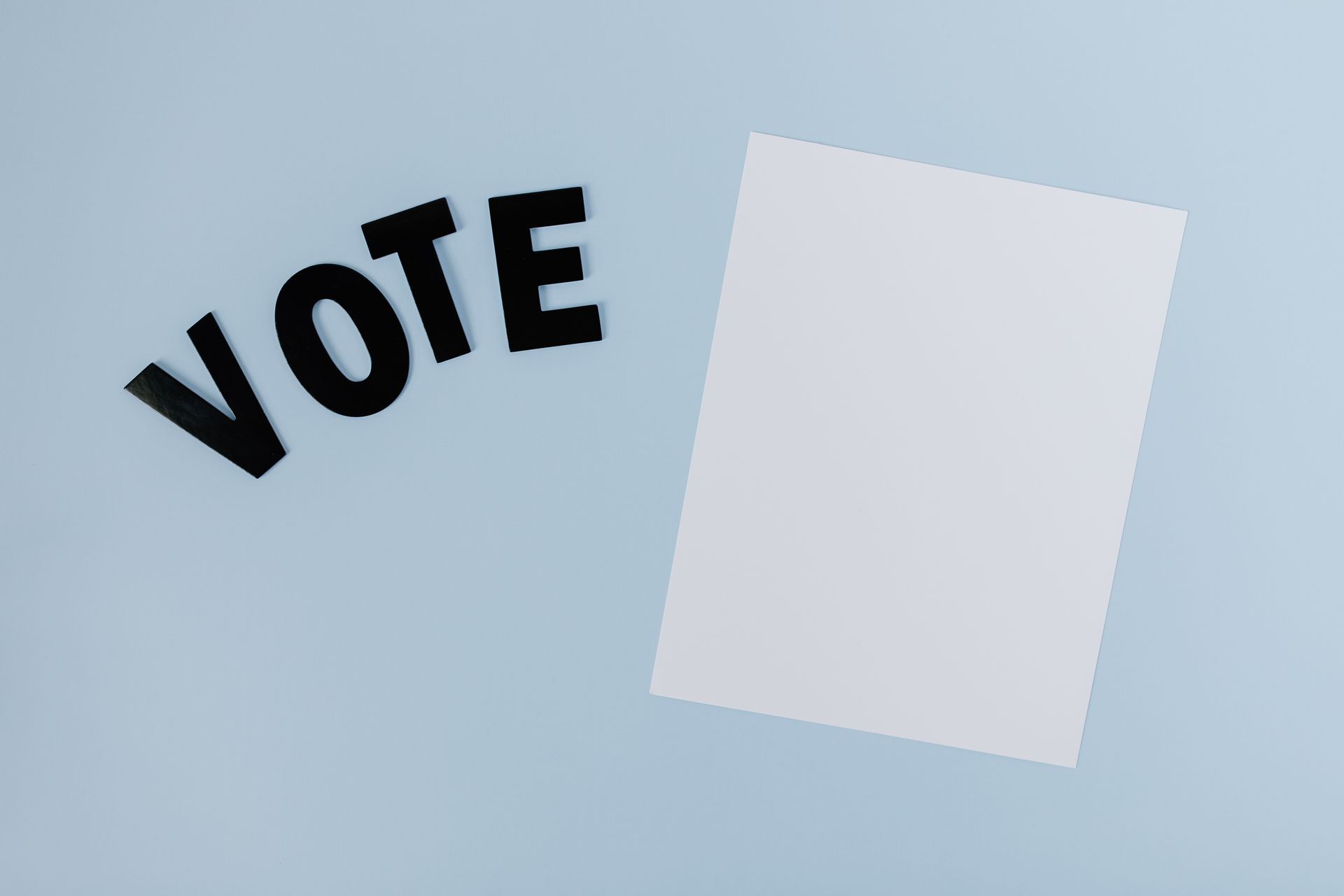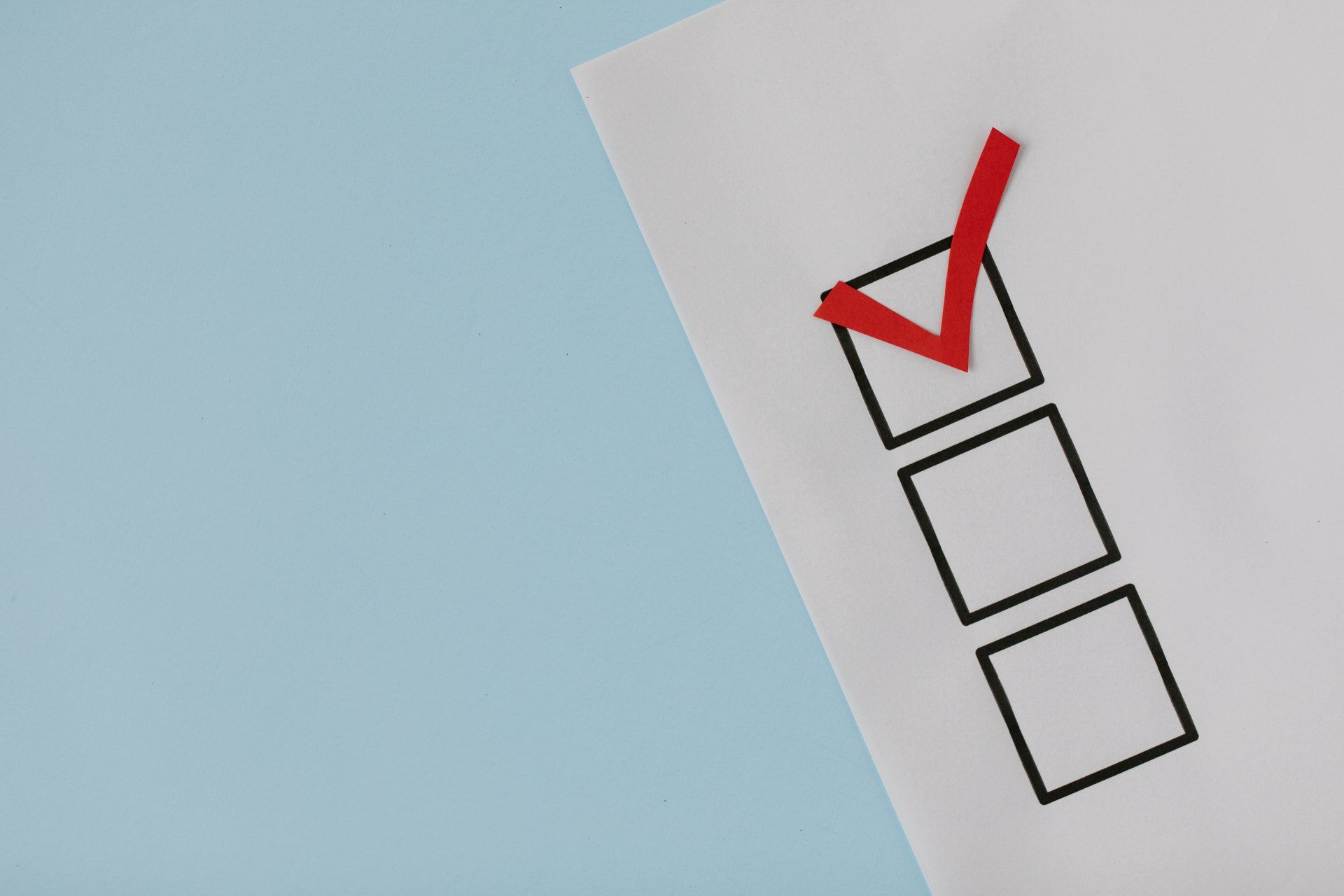A voter registration drive is a coordinated effort to help eligible voters get registered to vote at their current address — an important pre-requisite for voting in all but one state (North Dakota). Use this guide to inform your plans to host a specific event for voter registration and to support your community members with navigating the registration process.
When To Host a Drive
While you can register voters at any time during the year, there will be the most momentum in the lead-up to a national election.
For general elections in November, early-to-mid September is your target period.
Why is timing so important?
Registration deadlines can fall as early as 30 days out from Election Day. For mailed-in forms, they need time to reach their destination (especially if voters will be mailing them out of state) and they also need time to be processed by election officials
If you're engaging a group that will be mostly registering in the same state, consider hosting your drive 2-3 weeks before that state’s deadline.
You can also plan your drive for National Voter Registration Day, a Civic Holiday to promote and encourage registration nationwide. It's taking place on Tuesday, September 17, 2024.
Materials: What To Bring
1. Easy access to online resources
Display QR codes or SMS shortcode prompts that link to online resources and voter registration portals.
As a Motivote partner, you can direct users to your branded portal or have attendees check their registration status directly on your website with an iframe widget.
If you’re setting up at a table, also have some laptops or tablets handy.
While most people who stop by will have their own smartphones, they may find it easier to go through the online registration process on a larger screen. (In a few states, online portals require a touchscreen to provide a digital signature as part of their online registration process.)
☝️
Tip:
Use an incognito browser on shared platforms so user info doesn’t get saved or auto-filled.
2. Printed forms for paper registrations
Since not all voters will be able to register online, it’s helpful to have paper forms ready. All states allow voters to apply to register to vote via a paper form they submit by mail or return in-person.
Whenever possible, voters should use Online Voter Registration (OVR) because it's easier and faster.
But not all eligible voters will be able to register online. Here's why:
- In a few states, there is no online registration available at all. As of June 2024, states without OVR: Arkansas, Mississippi, Montana, New Hampshire, South Dakota, Texas, and Wyoming.
- In most of the states that do offer online registration, you need a Driver's License or other State ID number to use the online system. In particular, people who recently moved residences may not have a current State ID Number.
To accomodate voters who can't register to vote online, we suggest printing paper registration forms for the state where your organization is located — plus nearby states.
You can also print some copies of the National Mail Voter Registration Form, which can generally be used for registration in any state, so you have an option for everyone.
(Motivote covers all state-specific registration portal URLs and PDF forms in one place. Voters access the relevant site or form based on their saved address and whether they qualify to register online.)
☝️Tip:
When it comes to printed paper forms, the more the merrier! Since lack of access to printers is a major barrier to registering by mail, encourage passersby to take a few blank forms so they can share with others.
3. Freebies for stopping by, not registering
Freebies are a great way to attract people to your table. But keep in mind that it is illegal to offer ‘something of value’ in exchange for registering to vote or voting itself.
You can have giveaways, food or other freebies as part of your drive, but make them available to everyone — not something you get after confirming you registered or "in exchange" for registering.
You can also provide incentives in exchange for opting in to follow-up reminders or signing up for a tool like Motivote. This way, you are rewarding steps like making a voting plan and adding Election Day to the calendar that increase voting readiness, rather than voting itself.
Framing & Messaging
Be neutral and nonpartisan
You want everyone to feel welcomed and encouraged. In any printed communication and conversations with participants, remember that you are helping with the process of voting, not advocating for any specific parties, candidates or issues.
Follow these guidelines to stay nonpartisan:
- Don’t encourage someone to register for one party or another
- Don’t encourage someone to vote for one candidate or another
- Don’t make statements about political parties, candidates, or issues
Start with the easiest ask
Try inviting people to 'check their registration status' as a first prompt, instead of registering to vote. People are more likely to respond to being asked to "check your registration status!"
Why? Registering can feel like a bigger lift, versus just a quick check. Plus, people often forget to update their registration status after moving, so having them check their status is a good way to remind them to change it.
Stay away from "vote-shaming"
Ultimately it's each individuals choice whether to participate in elections. You can encourage that behavior by communicating the impact that voting has on our communities and collective well-being, lending an ear to concerns and hesitations, and providing resources to break down and simplify the process, But if someone is not receptive, don't devolve into shaming or singling out.
Follow-Up and Impact-Tracking
As part of preparation for your voter registration drive, make a plan for how your team will track:
- Who registered at your drive
- How to follow up with them
Being able to follow up with people from your voter registration drive significantly increases your impact.
Why? Because while registration is an important step, it's also just the first step of voting.
Each election cycle, millions of registered voters don't end up casting a ballot.
For many, the "drop off" is due to reasons like missing a deadline to request or return an absentee ballot, not leaving time in their schedule to go to the polls, or not having transportation.
Sometimes people simply forget.
Follow-up's help voters stay informed about steps to complete after registration. This is especially important if your drive is more than a couple of months before an election.
(Motivote automates email and SMS reminders about upcoming deadlines, so voters can check them off their list before it's too late. Users can also make a voting plan and add to their calendar.)
Being able to measure your impact is important for program evaluation. You'll want to track how many people you reached, registered, and helped vote, which can help you set goals for the future.
Data also helps your team members feel great about the difference they made!
At minimum, track how many people you talk to, how many filled out a registration form, and how many signed up to stay in touch after the drive.
(On Motivote, automatically pull this information for voters who engage with your portal and track impact after your drive.)
Rules & Restrictions
In some states, there are restrictions to voter registration drives, including:
- Requiring groups to pre-register and provide information about their activities
- Complete training through the state to be able to support with registration efforts
- Implementing deadlines which require completed applications to be returned before the general registration deadline
Learn more about state restrictions from the
Brennan Center for Justice and Movement Advancement Project's
interactive map.
If you’re in one of these states, we recommend getting in touch with your local election office or experienced nonprofit organizations to help you navigate.
Other Considerations
- Coordinate with your local elections office.
As part of planning your event, get in touch with your local office ahead of time and learn about any requirements or trainings they have. If you will be dropping off completed registration forms, let them know ahead of time as they may have preferences or instructions for you.
- Plan for mailing out-of-state forms.
If you will plan to mail in forms on behalf of voters in other states, plan ahead for needs like envelopes and stamps — and build in time to put them in the mail. Have voters address the envelopes as part of their registration process. (Working with younger voters? Create a visual for how to stamp and address an envelope! It's an unfamiliar process for many digital natives.)
- Be conscious of rules & restrictions.
If you're in a state with drive restrictions (see above) you can still share information and direct votes to relevant resources, but consider external partnerships for registration drives to ensure you're in compliance.









